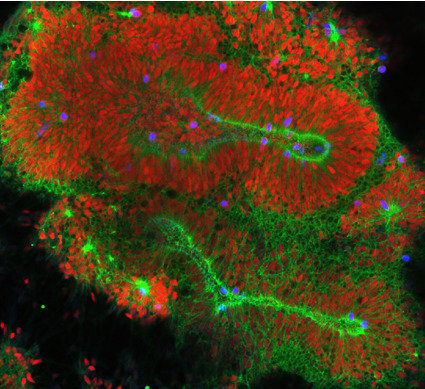Disclaimer: machine translated by DeepL which may contain errors.

Exploring the evolution of humans as an exceptional species
Ikuo Suzuki
(Associate Professor, Department of Biological Sciences)
Humans are extremely heterogeneous creatures compared to other animals. They have many characteristics unique to humans, such as advanced communication using language, well-developed sociality, little body hair, upright bipedal walking, cooking over fire, and a long life span. These characteristics have allowed humans to adapt to diverse environments and to explode in population. However, these characteristics not only provide survival advantages, but are also associated with diseases that afflict modern humans, such as cancer and dementia. Therefore, it is important to understand how humans acquired these abilities during evolution, not only from a biological perspective but also from a medical one.
Although these unique human characteristics are the result of the accumulation of mutations in the genome sequence, many of the mechanisms at the molecular and cellular levels remain a "mystery," requiring further study. However, there is a major challenge here. Many life science studies have successfully elucidated common mechanisms across species by using model organisms such as mice in their experiments. On the other hand, essential understanding of human-specific characteristics cannot be achieved without using humans themselves as research subjects. Ethical restrictions precluded direct experimentation on individual humans, making it difficult to conduct studies as detailed as those on model animals, but recent technological innovations have dramatically advanced the study of human biology. The development of organoid technology has made it possible to culture human ES and iPS cells and reproduce in vitro biological tissues that are very similar to organs such as the brain, and this technology has made it possible to experimentally study the unique properties of humans. In addition, more genome information has been accumulated on humans than on any other organisms, making it possible to identify genes and genome mutations associated with human characteristics by analyzing large amounts of genetic data, even when direct experiments are difficult. Combining genome information analysis with experiments using organoids is expected to provide clues to reveal the unique evolutionary path of humans.

Photograph of human cortical organoids. By culturing human ES and iPS cells under specific conditions, it is possible to create a tissue structure in a culture vessel that closely resembles the cerebral cortex of a human fetus. Even if experiments using individual animals are not possible, experimental studies can be conducted by utilizing organoids.
In understanding human specificity, the role of genes that have been acquired exclusively by humans during evolution is particularly interesting. For example, the human-specific gene NOTCH2NL has been shown to function during fetal brain development to expand brain volume and form complex neural circuits with more neurons. Furthermore, it has been shown that this gene is still evolving in modern humans. However, much remains a mystery as to how these genetic changes affect our lives and health. Future studies should comprehensively search for human unique genes, including NOTCH2NL, and elucidate how they function in which tissues and how they have influenced human evolution. By studying human uniqueness from an evolutionary perspective, we should gain a deeper understanding of our own path and use the findings to explore paths leading to a healthier and happier future.


